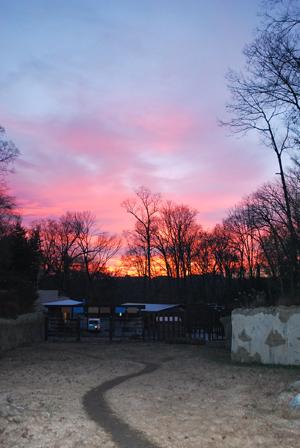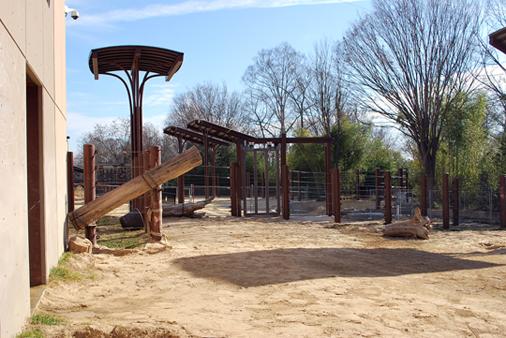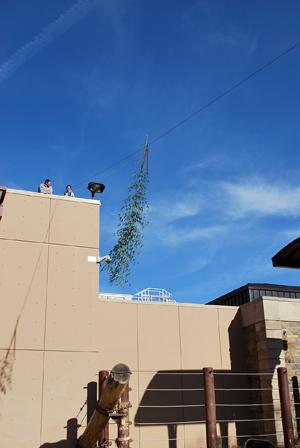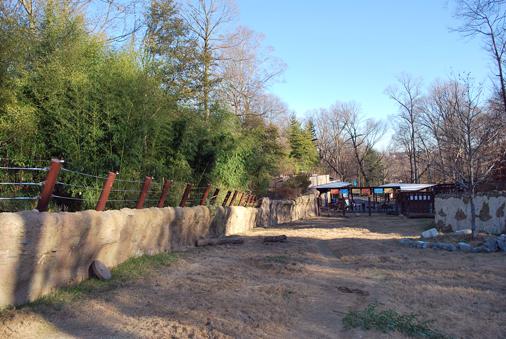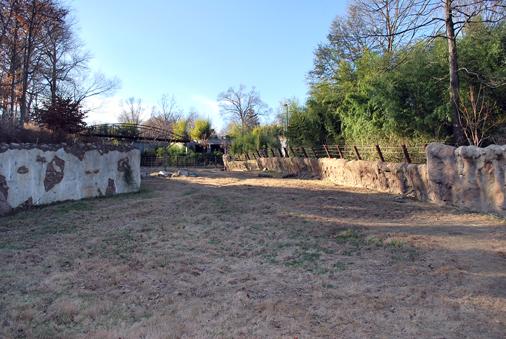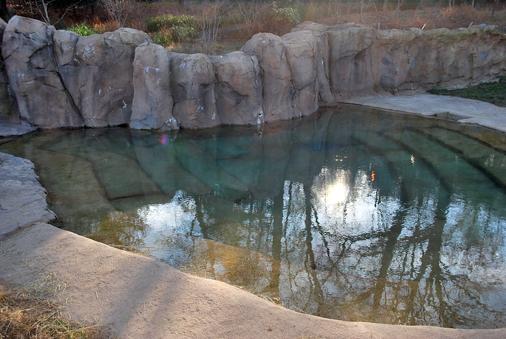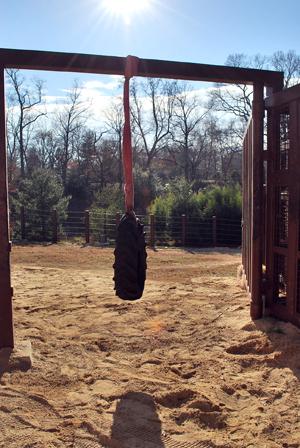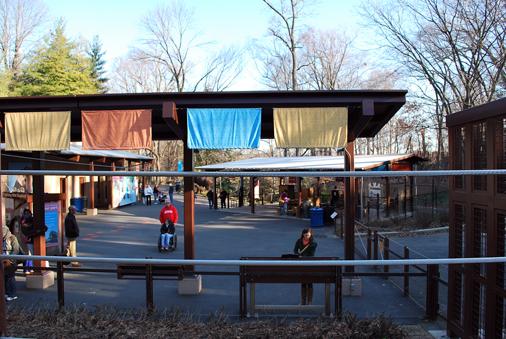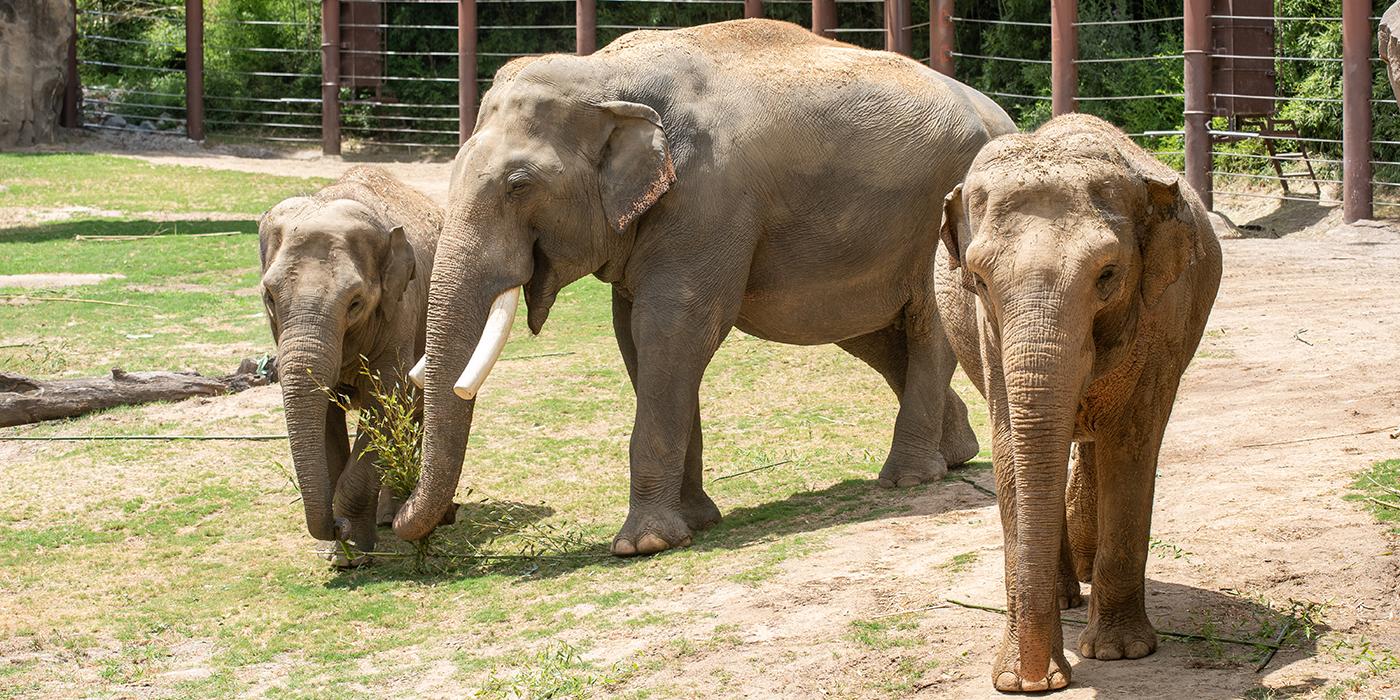Elephant Diaries Nov 01, 2012
Do you wonder what the world looks like from an animal's point of view? While visiting a zoo, have you ever looked at an object placed in an exhibit, a log or toy, for instance, and wondered why it was there? An exhibit's design is carefully and deliberately planned, not only to ensure the comfort, safety, and health of the animals, but ultimately to encourage natural behavior. This is true whether the animal is as small as an ant or spider or as large and powerful as elephants.
Over the next few weeks, we will share photos of our new Elephant Trails exhibit from an elephant's point of view. To approximate what our elephants see, we start off with a camera to boost ourselves up to see all Elephant Trails has to offer from Shanthi, Ambika, and Kandula's perspective. We can never know exactly what our elephants see as they wander through their home, but these photos will give you a comprehensive view of what Elephant Trails looks like from the inside out. And we had a great time shooting the photos!
We start off with Part 1 of our current outdoor elephant habitat, consisting of one large yard that can be separated into two separate areas. This allows us to appropriately manage our resident elephants' social structure—two adult females that live together and one juvenile male that spends much of his time energetically playing with toys and interacting with keepers.
In the next two months we will see the completion of Phase 2 of Elephant Trails. In a few short weeks, we will start introducing Shanthi and Ambika to the Elephant Community Center. Stay tuned to our photo blog to get an elephant's eye view of our new barn and habitats in the coming weeks. A beautiful sunrise paints the sky as our elephants would see it. Kandula, who often sleeps outside, travels toward the barn for breakfast every morning on a path created by the elephants. In the wild, pathways created by elephants are used by many other animals as well as humans. Emerging from the barn, our elephants often pause to consider their choices for sand dusting, sun bathing, napping, and scratching. A log set at the perfect angle provides a great back scratch, mimicking low hanging branches used by elephants in wild habitats. An elephant sun bathing on a sunny winter day spies a keeper on the roof providing fresh-cut bamboo from the overhead zipline. A mainstay of an Asian elephant's diet, bamboo is provided throughout the day. Powerful trunks break bamboo stalks and dexterously strip the leaves. As our elephants follow the path downhill to the Elephant Outpost for a daily training demonstration, they pass by fresh cut bamboo, a grain filled toy and logs for de-barking. Elephants spend up to 70 percent of their waking hours foraging for food over varying terrain; keepers encourage exercise by dispersing their diet throughout the exhibit. Our elephants love eating their lunch on the heated pool apron . Steps into the shallow, filtered pool allow elephants to feel comfortable getting in and out which is safer for calves and older elephants, while the two deeper pools will allow for swimming. Communally bathing in large bodies of water is a regular ritual for wild elephants, including excited vocalizations and often play between juvenile elephants within a herd. Hills and varying terrain encourage all of our elephants to exercise throughout the day while grazing on grass. Although dormant during the winter, the thick grasses in the exhibit also provide cushion while the elephants move. Anticipating hours of highly physical play, keepers offer an alternate path between the side paddock and habitats. Kandula, like other young male elephants, enjoys the physical challenge of pushing, pulling and throwing large, heavy objects. The Elephant Outpost is the best area for the elephants to get a closer view of our guests. As children play with the interactive graphics, Ambika can hear recorded sounds from elephants in the wild. Elephants use low frequency sounds to communicate with one another from miles away. Looking for a warm spot for a nap, our elephants follow the afternoon sun as it peeks through the branches of large shade trees on the ridge. The shade changes location throughout the day, encouraging the elephants to move about the habitats to regulate their own body temperature.
Related Species:

